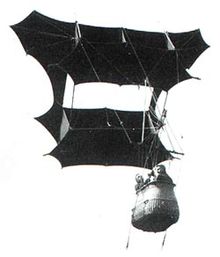Can A Kite Safely Lift A Person Off The Ground?
Man-Lifting Kites: Ancient China To Modern Adventure Sports
Keywords searched by users: Can a kite carry a person Describe a kite, Box kite, Kite surfing is a sport which is rapidly becoming more and more popular
How Much Lift Does A Kite Have?
To determine the amount of lift generated by a kite, we can use the following formula:
Lift (L) = Lift Coefficient (Cl) x Projected Surface Area (A) x Air Density (ρ) x 0.5 x Wind Velocity (V)².
Here, the lift (L) is calculated by multiplying the lift coefficient (Cl) of the kite with its projected surface area (A) and the air density (ρ) of the surrounding air. The factor of 0.5 is used to represent half, and it’s followed by the square of the wind velocity (V) in meters per second.
Air density (ρ) is a crucial parameter in this calculation and is typically around 1.229 kilograms per cubic meter (or approximately 0.00237 slugs per cubic foot). This density value is significant because it reflects the mass of air per unit volume in the atmosphere, which affects the kite’s ability to generate lift. In summary, the formula helps us understand how various factors like the kite’s shape (Cl and A), air density (ρ), and wind velocity (V) contribute to the overall lift force that keeps the kite aloft.
Who Was The First Man-Lifting A Kite?
The origins of man-lifting kites can be traced back to ancient China. The historical records date back to the Book of Sui in 636 AD, during the rule of Emperor Wenxuan of Northern Qi (550-559 AD). According to these records, Emperor Wenxuan used an innovative and rather cruel method to execute prisoners. He ordered them to ‘fly’ using bamboo mats, essentially lifting them into the air with kites. This early use of kites for human flight, while unconventional and tragic, provides a glimpse into the early experimentation and exploration of flight in ancient China.
What Are The Injuries Of Flying A Kite?
Flying kites can be an enjoyable pastime, but it’s important to be aware of the potential injuries that can occur while engaging in this activity. Some of the common injuries associated with kite flying include falls from heights, cuts caused by sharp kite strings, the risk of electrocution from power lines, and head and neck injuries resulting from sudden gusts of wind or collisions with obstacles. Understanding these potential risks can help you take precautions and enjoy kite flying safely.
Aggregate 41 Can a kite carry a person







![Person Flying Kite , Vector Cartoon Stick... - Stock Illustration [86832340] - PIXTA Person Flying Kite , Vector Cartoon Stick... - Stock Illustration [86832340] - Pixta](https://en.pimg.jp/086/832/340/1/86832340.jpg)
Categories: Discover 41 Can A Kite Carry A Person
See more here: maucongbietthu.com

A man-lifting kite is a kite designed to lift a person from the ground. Historically, man-lifting kites have been used chiefly for reconnaissance. Interest in their development declined with the advent of powered flight at the beginning of the 20th century.The first European who flew in a kite was a man named Baden-Powell. He succeeded in 1894 — 1300 years after Yuan had delayed his own execution by flying. The story of Chinese flight is a story of human ingenuity, all right, but it’s not a nice one.The lift L is equal to a lift coefficient Cl times the projected surface area A times the air density r times one half the square of the wind velocity V. r = 1.229 kg/m^3 or . 00237 slug/ft^3.
Learn more about the topic Can a kite carry a person.